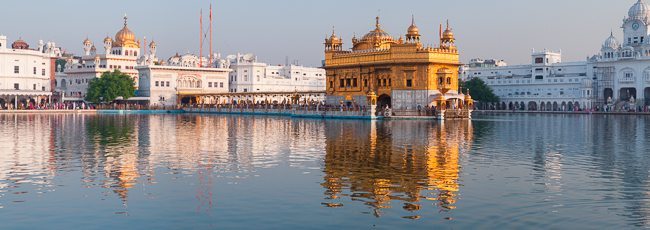
24 Sept 2012
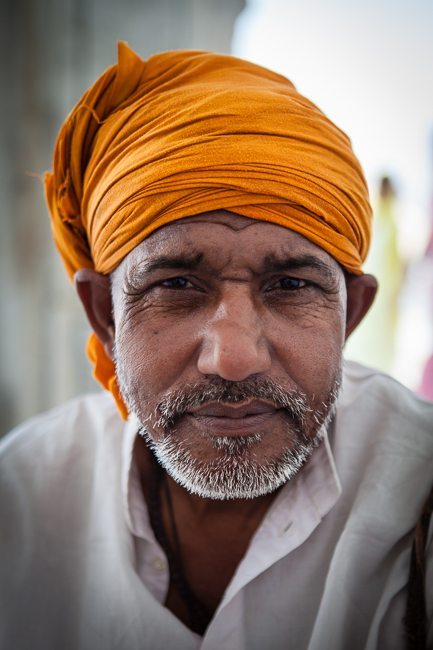
I can feel the energy in this place with every pulse of the chanting and music, the pilgrims walking the marble parkama, barefoot, heads covered, often carrying swords. The mass files slowly into the Darbar Sahib across the Amrit Sarovar (Pool of Nectar). The temple shines brilliantly, gilded in gold, reflected in the water.
The Sikh religion seems agreeable – based on tenets of equality, charity, and reverence. The devout never cut their hair, wear a single metal bangle, and carry a 6 in to 3 ft sword.
The stream of pilgrims never seems to stop. Foreign tourists are few and far between. At sunrise many pilgrims take a dip in the holy water. This is ablution – a spiritual bathing.
Much of this morning I spent chasing down permission to use a tripod on the parkama. I was directed by a spear-wielding Sikh to the security office, then to the information office, then to the secretary office, and finally back to the information office. But I did manage to get written permission!
The guru chants have put me in a trance. I fell asleep on the marble for an hour. They chant their holy book, the Guru Granth Sahib. They are accompanied by tabla and harmonium also.
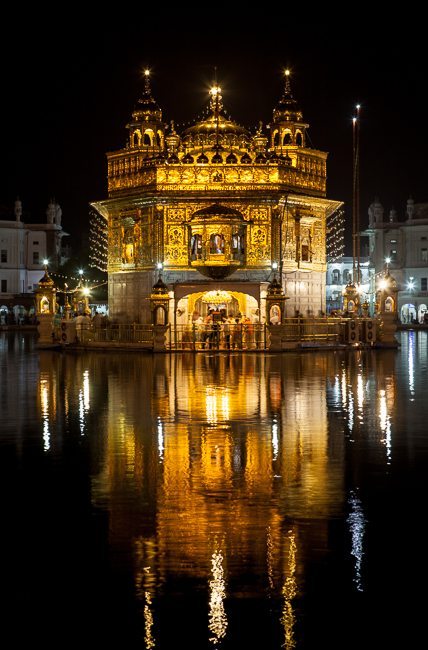
Amritsar is an incredible place – one of my favorite locations in all of India. The Sikhs are incredibly friendly and hospitable. In Amritsar I felt a relief from the constant begging and the hordes of salesmen attempting to extract every possible rupee from my wallet. Instead I was greeted with a love and a feeling of giving.
The Golden Temple of Amritsar is the holiest shrine of the Sikh faith. At the temple grounds is the langar – an enormous community kitchen that serves 100,000 people each day – for free. The food is prepared by volunteers and pilgrims, and paid for completely through donations.
As my journal entry mentioned earlier, two of the three tenets of Sikhism are equality and charity. This creates a completely different environment from that of the holy city of Hindu – Varanasi. Sikhism rejects the caste system that is central to Hinduism. This has a notable impact on the attitudes of these people and strikes a certain chord in my being – they seem to have figured out this notion long before Thomas Jefferson came around.
On a more practical level, Sikhism also means no vagrant cows in the streets, which means no sneaky piles of cow poop waiting to envelop the shoe and foot of an unsuspecting traveler.
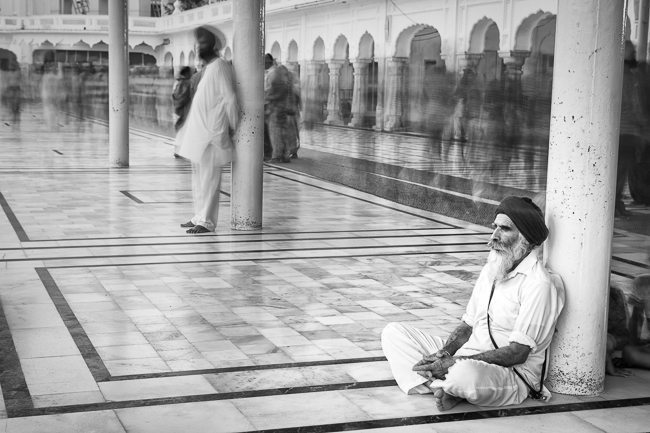
On a more serious note, I feel the above image rings true with my experience and observations at the Golden Temple. Throngs of pilgrims shuffle down the marble walkways to visit the temple. Shoes are left at the entrances to the complex, and all heads must be covered. Despite the hustle and bustle, there are the few that sit in repose, in pensive meditation. The few are still amongst an undulating crowd and I imagine their minds are also calm. What thoughts, I wonder, float through the mind of this bearded statue?

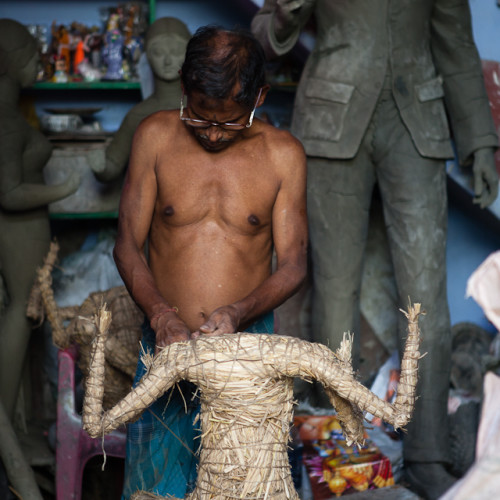


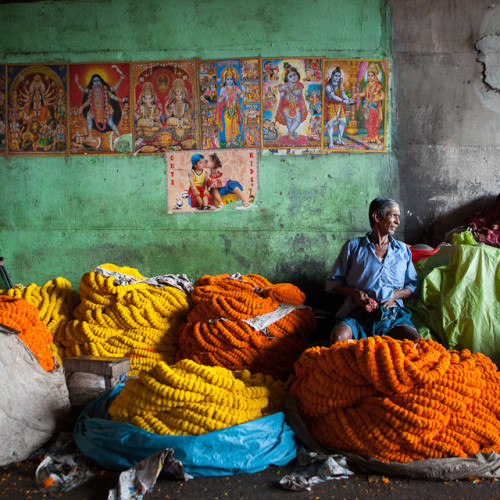
Leave a reply